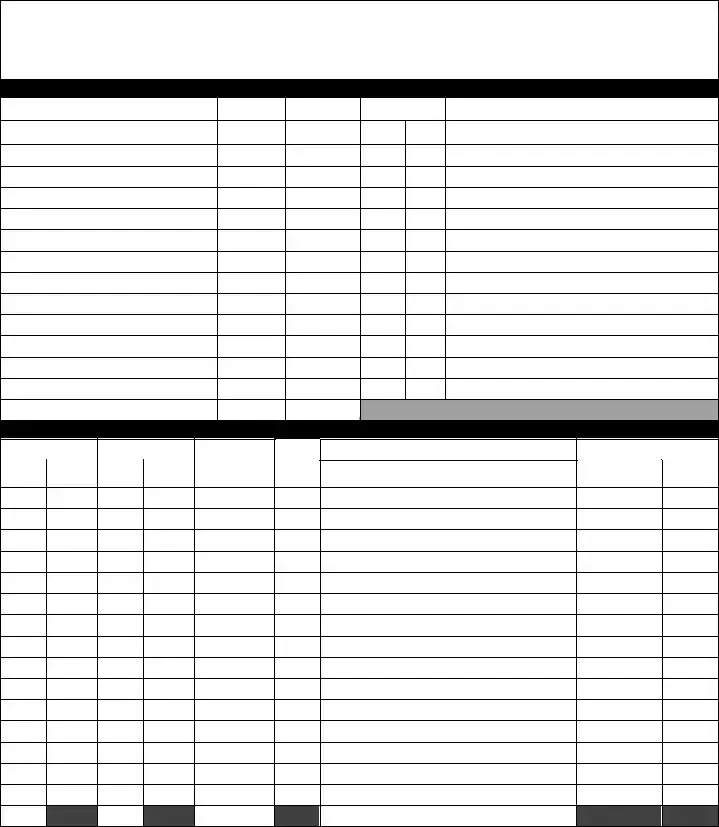What is a Bill of Lading?
A Bill of Lading (BOL) is a legal document between a shipper and a carrier that details the type and quantity of goods being transported. It serves not only as a receipt for the cargo but also as a contract for transportation. The BOL outlines the terms under which the goods are being shipped and protects the interests of all parties involved in the shipping process.
What is the purpose of a Bill of Lading with a Supplement form?
The Bill of Lading with a Supplement form adds necessary details or amendments to the standard Bill of Lading. This can include additional instructions, changes in shipment details, or other pertinent information that wasn't included in the original document. Using this form helps ensure that all involved parties are informed of any changes or specific instructions regarding the shipment.
Who is responsible for completing the Bill of Lading?
The shipper is primarily responsible for completing the Bill of Lading. They must provide accurate information about the goods being shipped, including their condition, weight, and value. After the shipper fills out the BOL, the carrier reviews and acknowledges the document before shipment begins. This ensures that both parties agree on the details provided.
What information must be included on a Bill of Lading?
A standard Bill of Lading should include the following information: names and addresses of the shipper and the consignee, a detailed description of the cargo, the weight and dimensions of the goods, shipping instructions, and the rate of transportation. The inclusion of precise details is essential for smooth transport and delivery.
How does a Bill of Lading function as a receipt?
When a carrier receives the goods, they acknowledge receipt by signing the Bill of Lading. This signed document serves as proof that the goods were received in the stated condition. If any issues arise during transportation or upon delivery, this receipt can be used as evidence to resolve disputes regarding the condition of the goods.
What should I do if there are discrepancies on the Bill of Lading?
If discrepancies are found on the Bill of Lading, they should be addressed immediately. The shipper can request a correction or amendment before the shipment departs. If changes occur during transit, a Bill of Lading with a Supplement form must be completed to update the record. Prompt action helps avoid complications later on.
Is the Bill of Lading a transferable document?
Yes, a Bill of Lading can be transferred to another party. This process, known as endorsement, allows the transfer of ownership of the goods stated in the BOL. Typically, this is done by signing the back of the document, which releases the rights to another party. This transfer should be executed with careful consideration to avoid confusion or legal issues.
How long should I keep a Bill of Lading?
It's advisable to keep a copy of the Bill of Lading for at least three to five years after the shipment has been completed. This duration allows sufficient time for any disputes or claims that might arise post-transport. Maintaining records not only aids in accountability but also serves as a crucial reference in case of audits or legal inquiries.
Can I void a Bill of Lading?
Voiding a Bill of Lading is possible, but it requires a formal process. The shipper must notify the carrier immediately if they wish to void the document. In cases of loss or errors, a new document may need to be issued. It’s essential to follow proper channels to ensure that the voided BOL does not cause complications in transportation or delivery.
What are the legal implications of a Bill of Lading?
A Bill of Lading has significant legal implications as it acts as a binding contract. By signing the BOL, the carrier agrees to transport the goods under the outlined conditions, while the shipper confirms the accuracy of the provided information. In situations where disputes arise, this document serves as critical evidence in legal proceedings, highlighting the importance of accuracy and clarity in its preparation.


 to certify that the above named materials are properly classified, packaged, marked and labeled, and are in
to certify that the above named materials are properly classified, packaged, marked and labeled, and are in proper condition for transportation according to the applicable regulations of the DOT.
proper condition for transportation according to the applicable regulations of the DOT.
 By Shipper
By Shipper
 By Driver
By Driver 
 By Driver/pallets said to contain
By Driver/pallets said to contain